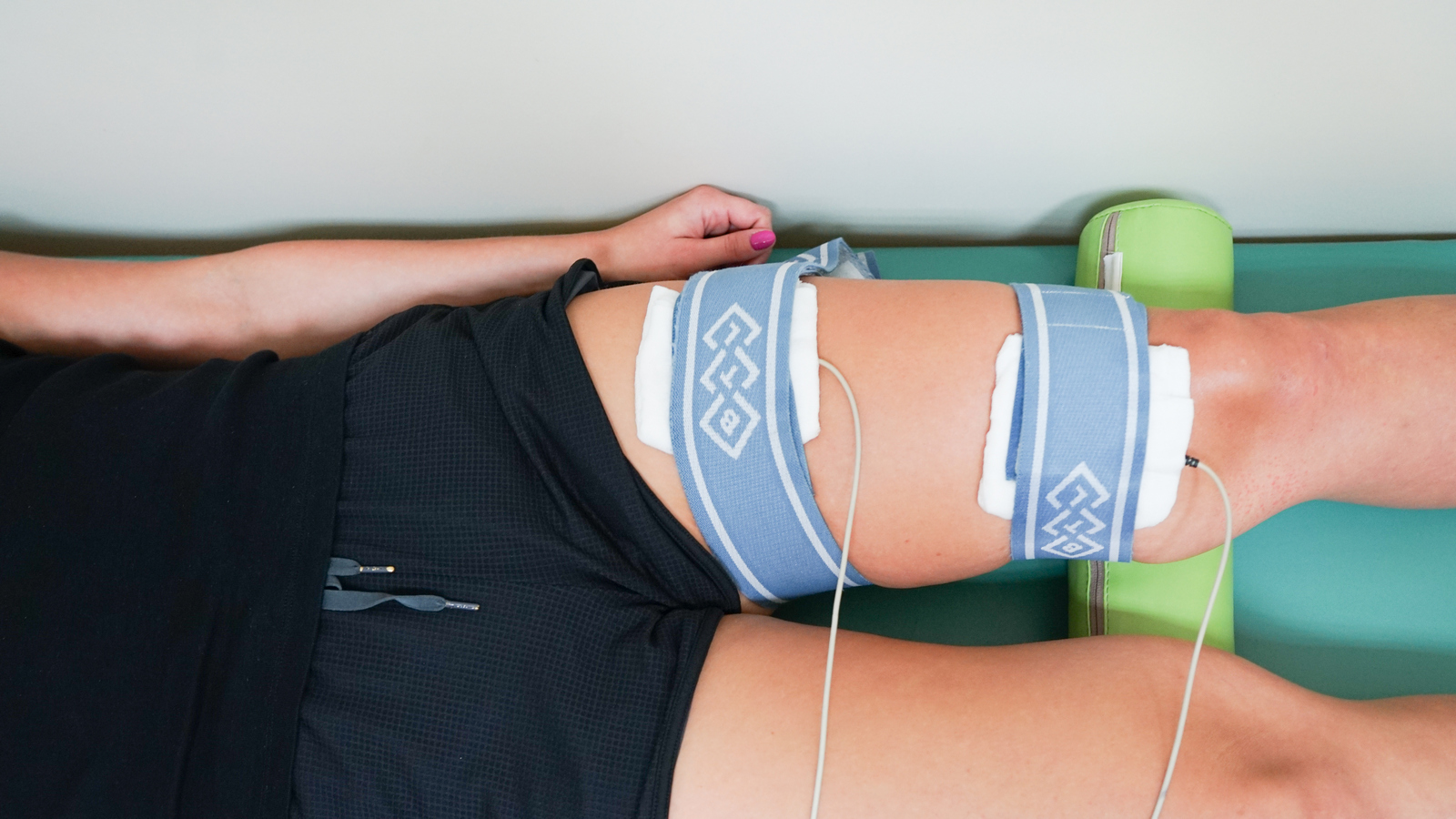Electrotherapy
TENS
TENS is an abbreviation from English and accurately stands for transcutaneous electrical nerve stimulation – Transcutaneous Electrical Nerve Stimulation. The procedure is used in both acute and chronic musculoskeletal pain syndromes, in circulatory disorders and for stimulating muscle fibers (TENS electrostimulation).
Indications:
- chronic pain in the musculoskeletal system
- Tooth ailments, headaches,
- Reynaud’s disease,
- Neck torticollis, neck pain,
- diseases of rheumatic origin,
- Sciatica symptoms, pain in the buttock,
- spastic paralysis,
- hemiplegia,
- Peripheral nerve damage,
- phantom pains,
- neuralgia.
Contraindications:
- cancer,
- infectious diseases,
- First trimester of pregnancy,
- mental disorders,
- epilepsy,
- sensory disturbances,
- Interruption of the skin at the treatment site,
- Frostbite and burns,
- implanted pacemakers and electronic pacemakers (we do not perform trans-thoracic pacing then).
Iontophoresis
Iontophoresis is an electrotherapeutic procedure that involves the introduction of ions into tissues under the influence of a low-intensity direct current flowing between electrodes. This treatment is most often used for analgesic and anti-inflammatory purposes, but has also found its way into the treatment of dentinal hypersensitivity or hyperhidrosis.
Indications:
- Facial nerve palsy,
- laryngitis,
- hyperhidrosis,
- circulatory disorders,
- Obstructed bone fusion,
- dentin hypersensitivity.
Contraindications:
- Pregnancy, lactation period,
- inflammation of the body (fever),
- Metal parts in the body and on the body (jewelry),
- Allergy to galvanic current,
- Acute acne with purulent lesions,
- Cancers and conditions after their removal,
- Bacterial, viral and fungal diseases of the skin,
- Pimples and interrupted skin continuity,
- peri-dental purulent conditions,
- purulent conditions of the tonsils,
- The possibility of an allergy to the drugs used in the procedure.
Diadynamic currents
Diadynamic currents, also known as Bernard currents, are created by rectifying a 50 Hz sinusoidal alternating current. They show strong analgesic and congestive effects.
Indications:
- Painful conditions, including neuralgia;
- moodiness;
- For muscle stimulation;
- frostbite;
- trophic disorders;
- Conditions of reduced muscle tone;
- Abdominal smooth muscle relaxation (LP current);
- joint stiffness;
- swelling.
Contraindications:
- skin lesions and wounds;
- Risk of venous embolism;
- acute inflammation;
- sensory disturbances;
- cancers;
- moles;
- metals in the body at the treatment site;
- inflammatory conditions in the abdominal cavity.
Interference currents
Interference currents (also called Nemec currents) are medium-frequency currents modulated in amplitude with low frequency. They are formed as a result of interference in the tissues of two medium-frequency alternating currents with a sinusoidal waveform, whose frequencies differ little from each other.
Interferential currents produce significant therapeutic effects on the human body. Among the most important are:
- analgesic effect, as the currents raise the pain threshold;
- Stimulating skeletal muscle to contract;
- Dilate blood vessels and improve peripheral circulation;
- Beneficial effects on the autonomic nervous system;
- Improving nutritional processes and tissue metabolism.
Indications:
- neuralgia;
- Discopathy, back pain;
- Osteoarthritis, soft tissue rheumatism, joint pain; post-traumatic and post-surgical muscle conditions;
- Sprains, dislocations, fractures;
- sciatica;
- AS;
- Myalgia and muscle strains.
Contraindications:
- epidermal damage at the site of electrode application;
- Significant swelling, thick adipose tissue preventing the currents from working effectively;
- Local, acute inflammation of the skin and subcutaneous tissue;
- Wounds in the area of the therapeutic field;
- Heart disease with significant destabilization of its function;
- Mental disorders and difficult contact with the patient;
- Post-traumatic conditions with an existing risk of bleeding or exudate intensification;
- Phlebitis, threatening thrombotic disease, trophic ulcers of the shins, diabetic angiopathy, atherosclerosis of the arteries;
- Unstabilized endocrine gland disorders;
- Cancer emergencies and tumors before 5 years of recovery;
- Rheumatic diseases in exacerbation;
- Acute infectious diseases, acute inflammatory diseases of the gastrointestinal tract;
- neuralgia of unknown origin;
- Pregnancy;electronic devices permanently implanted in the body, the presence of metal bodies in the patient’s body.
Electrostimulation
Electrostimulation, also known as electrotherapy, is one of the commonly used methods of physiotherapy, using low- and medium-frequency current to reduce pain, reduce swelling, relax muscles and improve chemical and nerve conduction.
Contraindications:
- implanted pacemaker or metal components (such as endoprostheses),
- nervous system diseases,
- cardiovascular diseases,
- cancer,
- inflammatory conditions,
- Skin diseases in the treatment area,
- pregnancy.

| Rzeszów, al. Rejtana 53 (3 piętro) tel. 17 865 20 06 |
| Rzeszów, ul. Łukasiewicza 88 tel. 533 349 029 |
| Łączki Kucharskie 248 tel. 17 865 20 99 |
| Mielec, ul. Partyzantów 21 tel. 17 788 92 26 |
| Dębica, ul. Kwiatkowskiego 1 tel. 509 890 297 |
| Jasionka 954F tel. 17 865 20 92 wew. 2 |